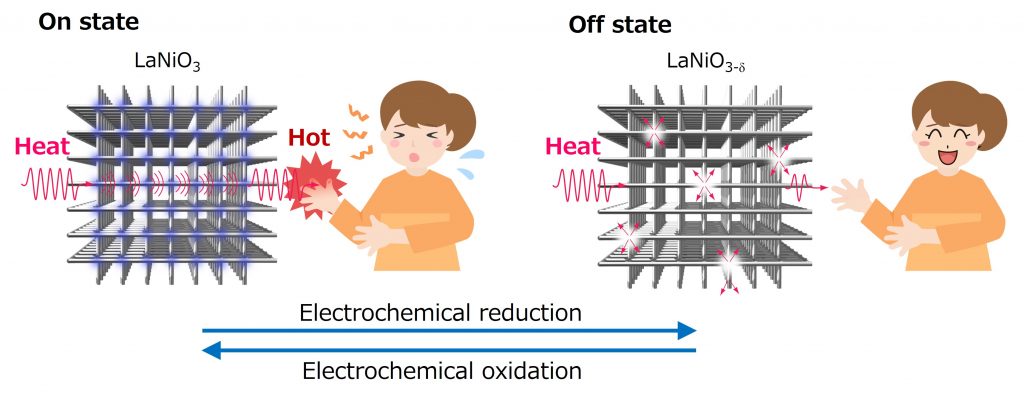Performance of our thermal transistor has been improved
Zhiping Bian, Mitsuki Yoshimura, Ahrong Jeong, Haobo Li, Takashi Endo, Yasutaka Matsuo, Yusaku Magari, Hidekazu Tanaka, Hiromichi Ohta*, “Solid-State Electrochemical Thermal Switches with Large Thermal Conductivity Switching Widths”, Adv. Sci. 2401331 (2024). (June 25, 2024) (DOI: 10.1002/advs.202401331)

Thermal switches that switch the thermal conductivity (κ) of the active layers are attracting increasing attention as thermal management devices. For electrochemical thermal switches, several transition metal oxides (TMOs) are proposed as active layers. After electrochemical redox treatment, the crystal structure of the TMO is modulated, which results in the κ switching. However, the κ switching width is still small (<4 W/mK). In this study, it demonstrates that LaNiOx-based solid-state electrochemical thermal switches have a κ switching width of 4.3 W/mK. Fully oxidized LaNiO3 (on state) has a κ of 6.0 W/mK due to the large contribution of electron thermal conductivity (κele, 3.1 W/mK). In contrast, reduced LaNiO2.72 (off state) has a κ of 1.7 W/mK because the phonons are scattered by the oxygen vacancies. The LaNiOx-based electrochemical thermal switch is cyclable of κ and the crystalline lattice of LaNiOx. This electrochemical thermal switch may be a promising platform for next-generation devices such as thermal displays.
Paper Z. Bian et al., Adv. Sci. 2401331 (2024) (DOI: 10.1002/advs.202401331)

